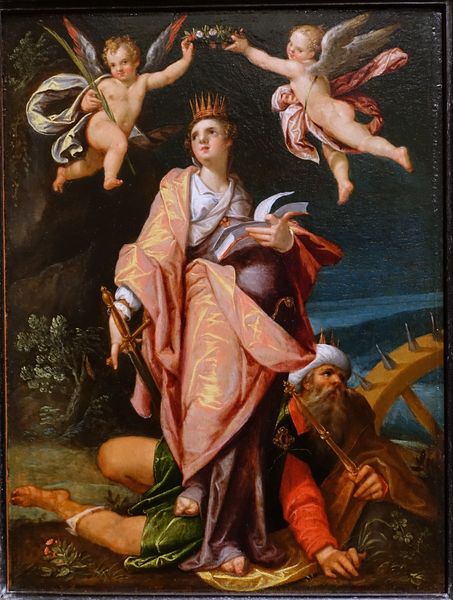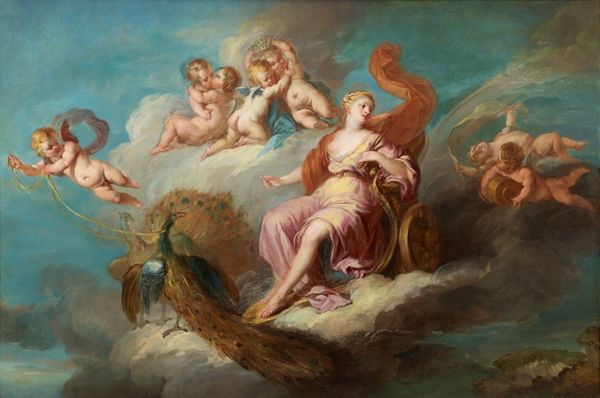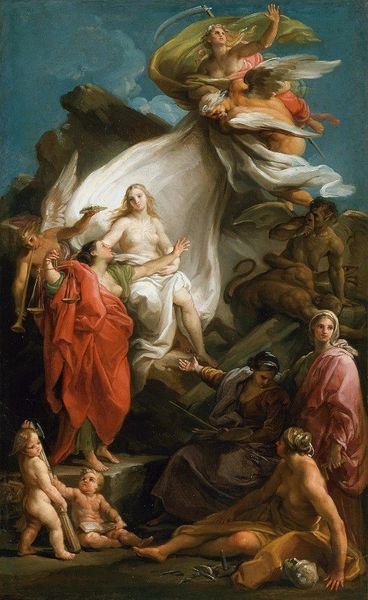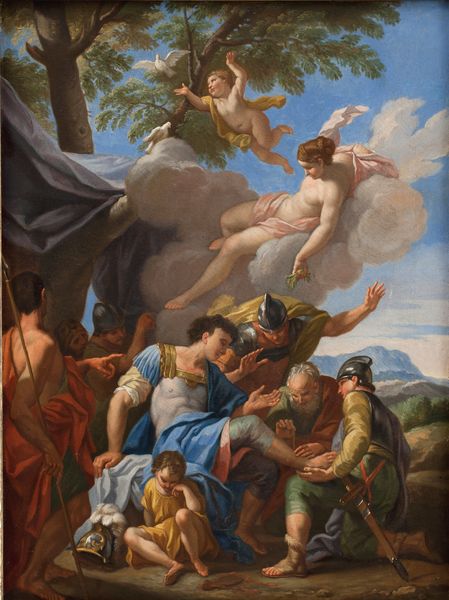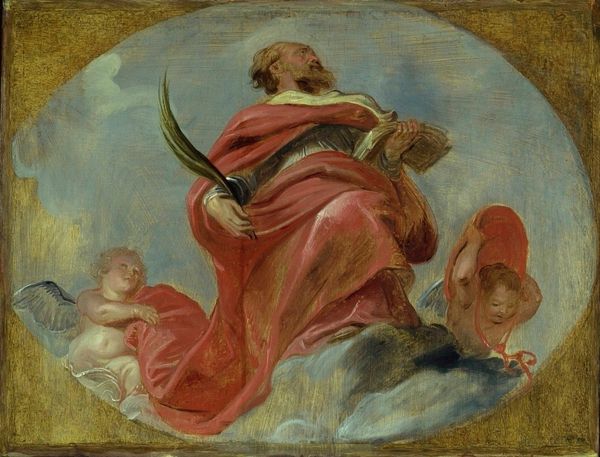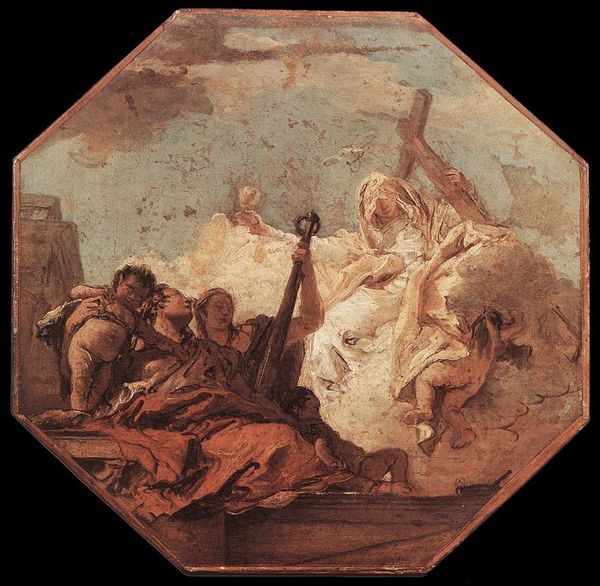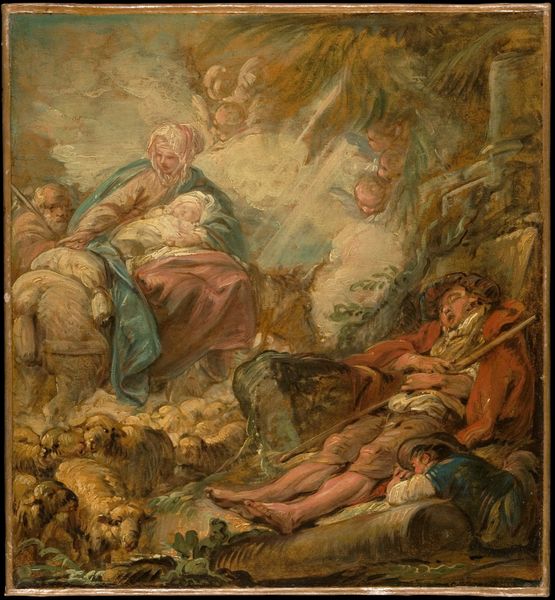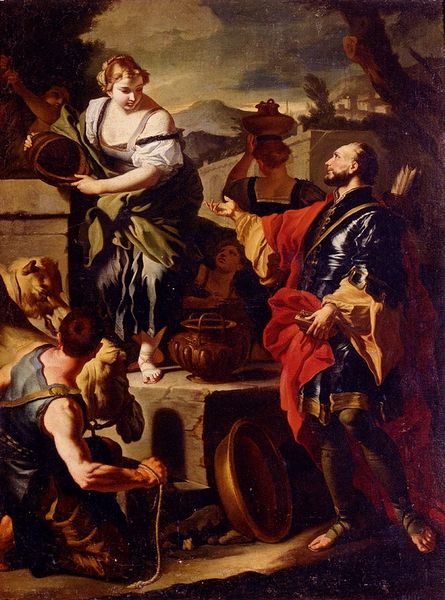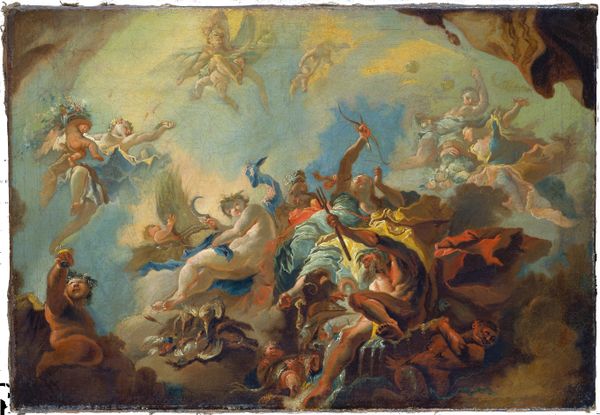
painting, oil-paint
#
portrait
#
gouache
#
neoclacissism
#
allegory
#
painting
#
oil-paint
#
figuration
#
oil painting
#
classicism
#
history-painting
#
academic-art
#
nude
Dimensions: 61 cm (height) x 37.5 cm (width) (Netto), 69.4 cm (height) x 46.9 cm (width) x 5.2 cm (depth) (Brutto)
Curator: So, here we are standing in front of Nicolai Abildgaard's "Frederik V as Patron of Science and the Arts," painted in 1787. What strikes you first? Editor: Wow, it's a lot! The composition is overflowing with figures floating on clouds, which gives it this very dreamlike, ethereal vibe. A little busy for my taste, though. Curator: Indeed. Abildgaard was working firmly within the Neoclassical style here, very deliberately echoing classical allegories. He's not just painting a portrait; he's crafting a statement about Frederik V's reign and its connection to enlightenment ideals. Notice how Frederik V, enthroned above, is surrounded by figures representing the arts and sciences. There is an explicit message in that symbolic arrangement. Editor: Yeah, the symbols are doing some heavy lifting. I'm picking up vibes of power, definitely some self-importance... all draped in the language of art. Does it ring true, though, or does it feel staged? The nude guy lounging below, is he a genius or just tired of posing? Curator: A pertinent question! That's probably a figure symbolizing the arts overcome by a slumber that anticipates new activity with the coming reign. And this "staging," as you call it, reflects the performative aspect of patronage itself. Frederik V isn't just funding these fields, he's actively constructing a narrative of enlightened leadership, even mythologizing his image in that process. It's about power, yes, but also about legitimizing that power through association with intellectual and artistic achievements. Editor: So it’s propaganda with pretty packaging. I get it. Still, the muted colors work somehow and keep me from feeling assaulted by the message. Curator: And that ties to the neoclassical aesthetic as well, evoking a sense of harmony and balance—though whether that resonates depends on if you feel the message is really in synch with that era. We can easily ask ourselves, was there a true symbiosis between the ruler and those fields of the arts, or merely convenient lip service for this period? Editor: Food for thought for sure. It does make you think about how images—then and now—play in power dynamics and storytelling, regardless if it's myth or a historical moment we should revisit. It's always interesting how much artists’ visions are shaped by the voices and the hands that pay them.
Comments
No comments
Be the first to comment and join the conversation on the ultimate creative platform.


